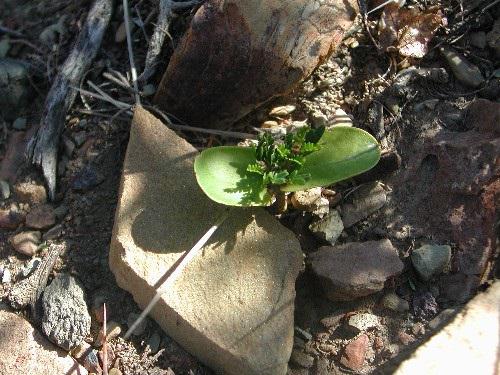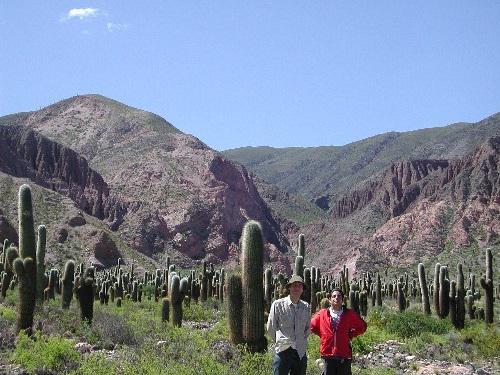Ramiro Pablo Lopez
In this study, I try to document how important is the association of seedlings of woody and succulent species of the Prepuna with the microhabitat created by adult shrubs or small trees. This might indicate the presence of facilitative relationships among woody perennials in this region.

Seedling of Cercidium andicola, one of the main small trees in the Prepuna.
Facilitation is an important process in many arid zones of the world. By improving micro-environmental conditions, adult shrubs (nurses) of certain species create favourable conditions for the establishment of hetero- and conspecific seedlings (beneficiaries). Our knowledge of this phenomenon in arid regions of the Andes is almost non-existent.

Cactus “forest” (Trichocereus atacamensis). Quebrada de Humahuaca, Jujuy, Argentina, 2600 m.
In this study, I try to document how important is the association of seedlings of woody and succulent species of the Prepuna with the microhabitat created by adult shrubs or small trees. This might indicate the presence of facilitative relationships among woody perennials in this region. I try to understand what role the different woody species in the region play: that of nurse plants or that of beneficiaries, and I study the association in relation to the spatial scale considered: local, altitudinal, latitudinal, and regional. I intend to visit different sites located in the Prepuna (Argentina and Bolivia), along latitudinal (between parallels 20 and 25, approximately) and altitudinal gradients (from 2200 to 3200 m). Thus, the study has a regional scope. It has also a multi-species approach: I will try to work with all (most) of the species of the sites visited.
The study is observational: it describes a pattern found in nature. In each site (I estimate around 20), I will record at least 30 seedlings of each woody/cacti species (individuals < 30 cm height) present, indicating if it grows below a shrub’s canopy (writing down the shrub species) or in open spaces. I will also measure species cover (line-intercept method). If distributed randomly, seedling densities should correspond with microhabitat cover, i.e., shrub (and shrub species) or open. I will need approximately 18 days to complete field work (end of march up to middle April, i.e., the beginning of autumn). Besides its value in helping us understand aspects of the ecology of these regions, the information gathered in this study might be important for the conservation and management of the species involved in the interaction, especially for recovery efforts of species with small populations, or for revegetation purposes.